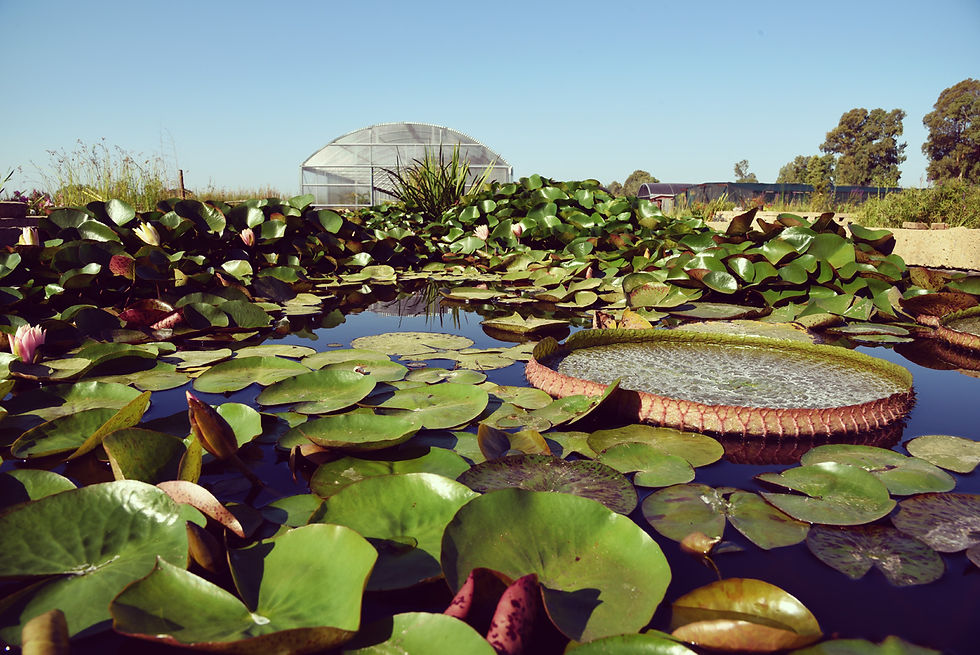LAZIO
CENTRO BOTANICO MOUTAN
The Chinese peonies garden
BY GRETA ARANCIA SANNA

Hidden in the countryside of northern Lazio is a garden, unique in its kind, that is home to all the species and varieties of Chinese peonies. Here an unprecedented collection of unique rare plants flourishes among holm oaks, laurels, cypresses and autochthonous plants. In April and May this corner of terrain blooms in a plethora of colors and inebriating fragrances.
The story of the world’s largest collection of Chinese peonies starts in 1980 with Mr. Carlo Confidati, whose search for an original design for his home garden lead him to be capture by the allure of the flower, prised by so many for its beauty. The center was later founded in 1993 out of a deep desire to know all existing species and varieties of Chinese tree peonies. The aspiration was to find these flowers in the remotest areas of Asia, import them to Europe and bring them together in a single place, to promote their awareness and diffusion. Today the Moutan Botanical Center includes around 600 different varieties and natural hybrids belonging to known botanical species.

The undisputed gems of the present landscape are the Rockii species, extraordinary peonies that grow wild on the high plains in Tibet, at an altitude of over 2000 meters, withstanding extreme temperatures that drop below -20°C. The Chinese name for this flower is “Zi ban mu da” meaning “tree peony with flowers at the base of the petals”. this characteristics makes it easily identifiable and very prized. It was discovered in 1925-26 by the American Joseph Rock, a plant hunter. It has a vigorous, wide shrub, 3 meters tall with milky white flowers that present a characteristic black stain at the base. With its elegant and characteristic foliage, the stain on their petals, the late flowering and the remarkable resistance to the cold the Rockii peony is the pride and joy of the garden.
Another peony that adorns the garden is the Ostii species. These present single white flowers with an average of 12 petals, with occasionally pink veins. It is further an early and longlasting flower with a delicate scent.



The two latter species have been frequently combined in a flower hybrid with an uncommon shading of color: the rockii x ostii. The plants are obtained by natural hybridisation, by way of a long propagation using the seed and selecting the progeny. This makes each one a unique and unrepeatable example which may be distinguished even by just a detail in the flower of the leaves. The hybrid of these two species have intermediate characteristics that make the plants truly particular. They are normally very large, vigorous and resistant, with large single flowers. The undefined purple stain at the base is that of the rockii peony but the color shades upwards towards the petal tips. The hybrid also presents a pink variety usually lighter or deeper pink with vivid purple streaks that origin at its heart.
The garden also proudly exhibits a number of Herbaceous Peonies. Easy and sturdy these shrubs, helped by their rhizome roots, are ideal for small gardens dying down in winter and growing back in spring. Their long stems are also ideal to make bouquets whose permeating fragrance dissipates in the fresh breeze. More specifically the peony lactiflora, native to Siberia, produced many cultivars, with flowers measuring up to 20 cm across. It has a sweet fragrance and ranges in color from red to white.
Finally, an additional species that irradiates that garden with its vibrant shades of pink is the Suffruticosa peony. Its flower is characterised by a crown of petals rich in color and foliage. It produces numerous flowers and some species, such as the Er Qiao, are a surprising combination of two different colors.
This Peony Garden is truly an oasis of tranquility set amidst the colours and fragrances of the peonies and amongst climbing roses, American vines and passageways spelling wisteria that waver in the spring breeze, the noises of the city feel pleasurably distant. Overall, the Moutan Botanical Garden invites us to meander through a place unique in its kind, revealing the particularity and beauty behind the peony and all its existing species.
Greta Arancia Sanna

































